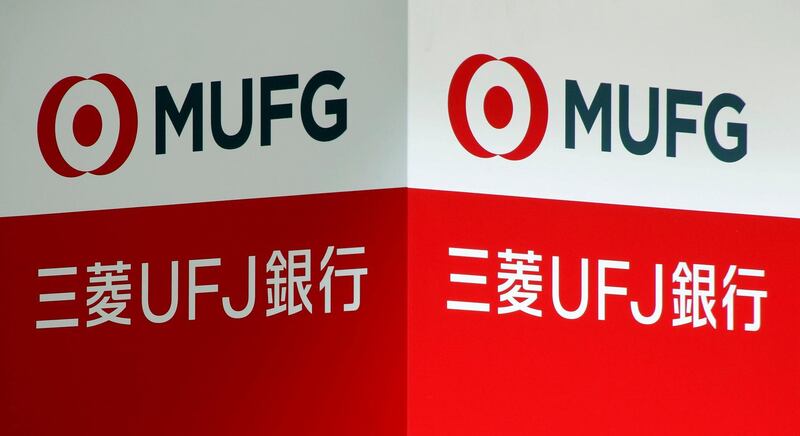Governments in the Gulf region will continue to tap debt capital markets this year, but their external financing needs are likely to be lower, according to the regional head of research and strategy at Japanese bank MUFG.
Sovereign issuance by Gulf governments is expected to reach around $31.9bn (Dh117.1bn) in funding to bridge budget deficits as they look to take advantage of a pause in interest rate hikes and the low cost of debt globally, said Ehsan Khoman, head of Middle East and North Africa research and strategy at MUFG. However, this is likely to be significantly lower than the amount issued last year.
Although MUFG did not give a comparative figure, a paper published by Kuwait Asset Management Company this month stated sovereign bond issuance from GCC countries increased 29 per cent last year, to $48.8bn. A further $29.8bn was also issued in sukuk, up 12 per cent on 2018.
Cumulative gross financing needs of the Gulf states will narrow in 2020 on the back of stability in oil prices at relatively higher levels and more prudent expenditure policies of regional governments, Mr Khoman said.
At $52bn, Saudi Arabia tops the lists in the six-member economic bloc of GCC – home to about a third of the world’s proven oil reserves – in terms of gross financing needs. The kingdom, which is also the biggest Arab economy, will meet its funding requirements through a combination of proceeds from the privatisation of state-owned entities, domestic issuance and drawdowns of sovereign wealth funds and domestic bank deposits, Mr Khoman said.
The kingdom sold its first Eurobond of 2020 on Tuesday and raised $5bn, for which it received $23bn worth of orders, finance minister Mohammed Al Jadaan told Bloomberg TV on Wednesday during an interview on the sidelines of the World Economic Forum. It will tap international markets for about $9bn in total, he said.
"This will either be through issuances as we did yesterday or through alternative government financing," Mr Al Jadaan said.
“We have seen Saudi Arabia come to the market. They have been very transparent with their numbers …. markets like that a lot,” Mr Khoman said. “Typically, Saudi Arabia sets the tone for the debt markets, they came and now the rest of the sovereigns will follow through with their borrowing programmes.”
The UAE, the second-biggest Arab economy, which raised $10bn through a multi-tranche international bond deal in October 2019, has gross financing needs of $11.6bn in 2020. Oman and Bahrain have requirements of $6.7bn and $3.2bn, respectively, Mr Khoman noted.
“The wild card is Kuwait. The reason is that if Kuwait wants to issue debt, they have to pass the debt law. [Although] Kuwait really doesn’t need to raise anything …. they have surplus,” he said.
However, Kuwait, along with other regional issuers, he said, will continue to tap global bond investors as it assists the development of local capital markets, and debt issuance helps create “dots on their yield curves”, he said.
Most sovereigns in the region remain well-positioned with ample buffers to withstand lower oil prices over time. Despite a fall in hydrocarbon income, non-oil economies in the GCC have shown signs of strength in 2019 which bodes well for prospects in 2020, he noted.
“Non-oil growth is picking up and that is going to give a lot of comfort [and confidence] down the line for FDI flows to the region," he explained.
In terms of the global macroeconomic picture, 2020 will have many uncertainties but global trade tensions are likely to recede after the signing of the ‘phase-one’ US-China trade deal. However, the tiff between the world’s top two economies has caused damage, with the volume of global trade contracting on an annual basis, Derek Halpenny, MUFG's EMEA head of research for global markets, said.
Most tariffs will remain in place until a phase-two deal is signed, so trade is unlikely to revive notably. The International Monetary Fund this week downgraded its global growth forecast by 0.1 per cent to 3.3 per cent this year and by 0.2 per cent to 3.4 per cent in 2021.
“We may well be at peak uncertainty, but we still see plenty to maintain uncertainty levels high this year," Mr Halpenny said. The global macroeconomic scene in 2020 will be like 2017 with moderate growth and some risks to US economic growth, he added.
Global oil demand growth, however, is forecast to rebound in 2020 to 1.1 million barrels per day, mainly on the back of demand in China and India. With the US-China outlook improving, “MUFG is becoming more sanguine about the global economic outlook which puts oil demand prospects on a more sturdier footing in 2020”, he noted.
“[There is] demand optimism but a mixed supply outlook will keep oil prices in check.”
The alliance of oil-producing nations known as Opec+ has been curbing production since the beginning of 2017 in a bid to control supply and support pricing. The group agreed in December to deepen cuts to 2.1 million barrels per day starting from this month until the end of March.
“We have has three iterations of cuts since 2017. Given our oil price projections, we think Opec[+] would probably just rollover the production agreement until the end of the year,” Mr Khoman said. “[It] could surprise the market with deeper cuts of course …. Under new management we could see even deeper cuts,” he added.







